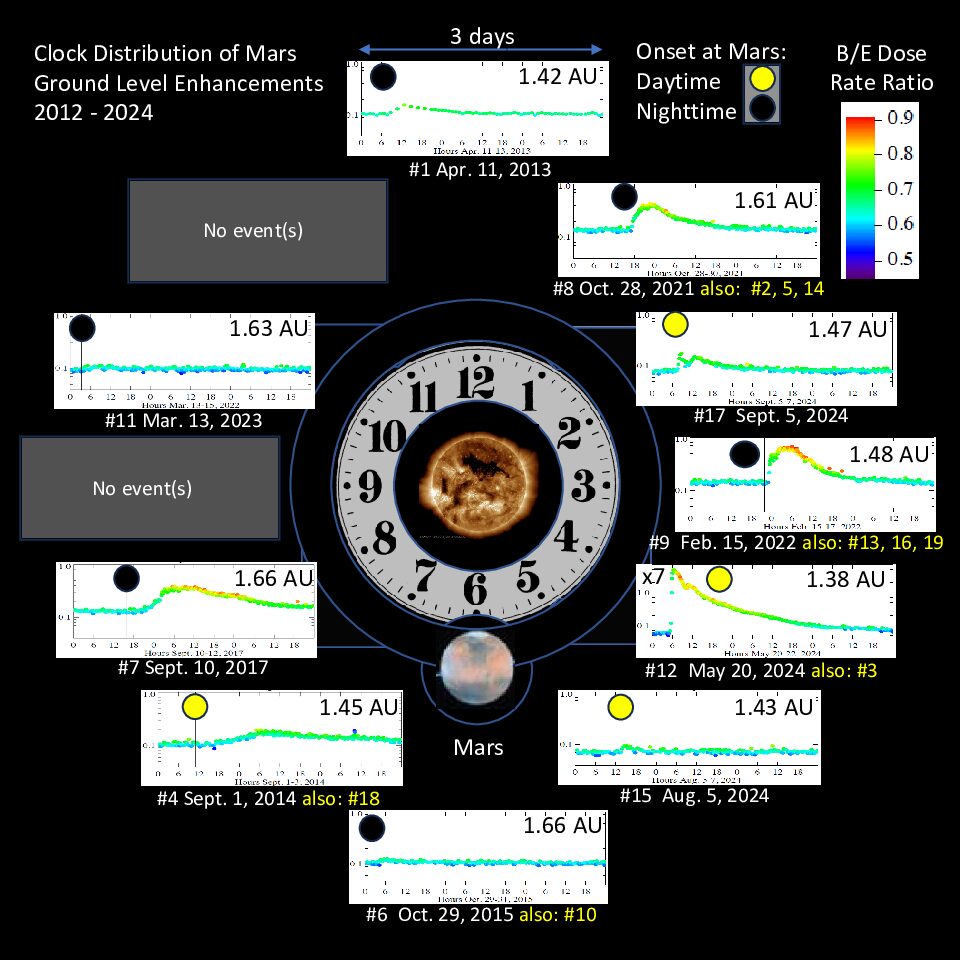Authors: Arik Posner (NASA HQ, NASA JSC), Ian G. Richardson (Univ. Maryland, NASA GSFC)
In the recently published “SEP Clock” study (Posner, Richardson & Strauss, Sol. Phys., 2024), we analyzed all wide-spread deka-MeV solar energetic proton (SEP) events of the STEREO era and found that SEP protons can show energy dispersion, i.e., a clear sign of the arrival of higher-energy protons before those of lower energy, at all longitudes with respect to the solar event. We also find that not only does the duration of the energy dispersion increase with magnetic connection distance, but the onset delay at any fixed energy relative to the eruption/release of particles from the Sun is highly correlated with the energy dispersion duration. From these findings, we conclude that the onset of SEP protons is dominated by cross-field diffusion in the heliosphere, while the width of the injection region, such as the CME-driven shock, plays a more limited role in the spread of high-energy SEP protons. A recent study of SEP events observed as Mars Ground Level Enhancements (MGLEs) observed by the Radiation Assessment Detector (RAD) onboard the Curiosity rover (Posner, Richardson & Zeitlin., to appear in Sol. Phys.) has resulted in additional insights confirming the above picture: In particular, we observe transport-related delays in onset and peak times of MGLEs relative to solar particle release that show a clear dependency on magnetic connection distance from the solar eruption site. All 19 MGLEs, which, due to the Martian atmosphere, require minimum proton energies of 140 MeV, were also observed by SOHO, STEREO A and B, and/or Solar Orbiter as enhancements in >25 MeV protons, regardless of the spacecraft location with respect to the solar eruption site or Mars. Moreover, we find that soon after the flare, the MGLE-related SEP event forms a high energy proton reservoir that extends beyond Mars distance from the Sun. Utilizing Mars’ rotation there is no obvious anisotropy signature present in RAD observations of MGLE decay phases, and MGLE onsets happen in roughly equal numbers during a Mars day or night. This points to a short-term injection of high-energy protons into the heliosphere with near-negligible re-acceleration at shocks after injection.


